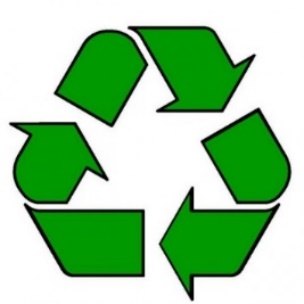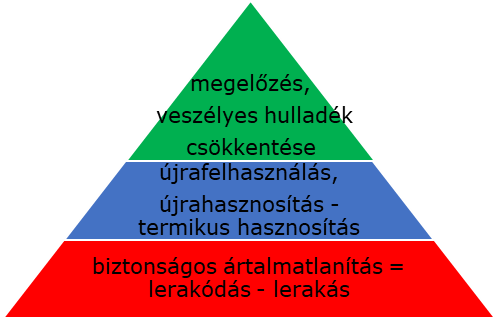1. ELMÉLETI RÉSZ
Ha a hulladékgazdálkodás alapjairól beszélünk, érdemes először a lényegesebb kifejezéseket tisztáznunk. Mi a hulladék és mi a szemét? Fontos kérdés, mivel sokan és sok helyen keverik a kettőt. Hulladéknak tekintjük azokat az anyagokat, amelyek keletkezésük helyén haszontalanná váltak, tulajdonosuk szabadulni akar tőlük, de bennük hasznosítható, értéket jelentő anyag és/vagy energia van. A szemét olyan haszontalanná vált anyag, amelyet tulajdonosa nem tud, vagy nem akar tovább használni. A szemét kikerül a gazdaság körforgásából, mivel nincs benne gazdaságosan hasznosítható anyag és/vagy energia és vegyesen kerül tárolásra, lerakásra. Fontos kifejezések közé tartozik az újrahasználat is. Az adott terméket hulladékká válása után ugyanarra a célra használnak fel úgy, hogy megőrzi eredeti formáját és funkcióját. Például PET palackból ugyanúgy PET palack készül, lerövidítve a termék előállításának folyamatát, nyersanyagot és energiát megtakarítva. Az előző fogalomhoz hasonló, mégis lényegi különbséget jelentő az újrahasznosítás (1. ábra).

1. Ábra: Az újrahasznosítás logója (Forrás: kornyezetunkert.eoldal.hu)
Az adott termékből hulladékká válása után olyan másodlagos anyagokat vagy más funkciójú terméket állítanak elő, amellyel ugyancsak segítik a nyersanyagok felhasználásának csökkenését. A hulladék veszélyeztető hatásának csökkentésére, a környezetszennyezés megelőzésére és kizárására, a termelésbe vagy fogyasztásba történő visszavezetésre irányuló tevékenységek és eljárások összessége. A hulladékgazdálkodás prioritásai, célrendszere fontossági sorrendben a következő: a hulladékok képződésének megelőzése; a hulladékok veszélyességének csökkentése, újrahasználat, újrahasznosítás, termikus hasznosítás, végül pedig a lerakás (2. ábra).

2. ábra: A hulladékgazdálkodás célrendszere
A következő oldalakon olyan, hazánkban is alkalmazott újrafelhasználási technológiákat mutatunk be, amelyek hozzájárulhatnak az 55%-os céladat teljesítéséhez. A soron következő esettanulmányok érintik a mindennapi fogyasztói életünkben domináló műanyag és papír hulladékokat, valamint a több szempontból is kihívásokkal teli polisztirolt.

 English
English Español
Español Turkish
Turkish български
български Polski
Polski Português
Português